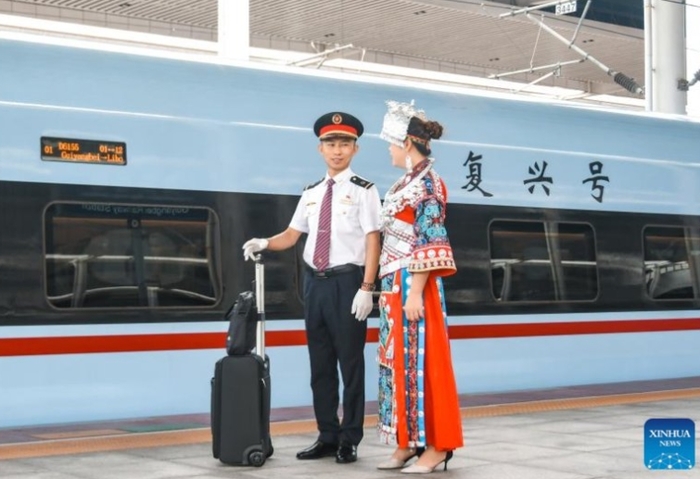Sound of Tang Music
A concert of dynasty melodies becomes a hit in Shanghai.
Musicians and historians have for the past century been trying to figure out what ancient Chinese music sounded like. The concert, Music Along the Silk Road — Echo of the Tang Dynasty, which took place at the Shangyin Opera House in Shanghai on Jan 6, was one of the most extensive re-creations of the sounds and colors of the Tang Dynasty (618-907) that historians and musicians have achieved on a stage.
To prepare for the concert, Zhao Weiping, a professor at the Shanghai Conservatory of Music, and his team re-created more than 30 musical instruments from the collection of Shosoin, the treasure house of the Todai-ji Temple in Nara, Japan, where many Chinese cultural relics have kept since they were brought by Japanese envoys in the Tang Dynasty.
"We had the instruments made based on their actual size, form and material," Zhao told the media backstage before the show. "It was a long and difficult process that took many years. We use mainly steel strings in music-making today, but the sound is just not right for ancient Chinese music.
"I went to many workshops that make traditional silk strings in Kyoto and eventually found strings that are slim and firm enough to be bound tightly on instruments such as the pipa."
In the 20th century, music books from the Tang Dynasty were found in the Buddhist caves of Dunhuang in Gansu Province. Since then musicians have translated the sounds, melodies and rhythms to bring the music back to life.
According to Jing Zuoren, a Beijing-based music critic, public interest in traditional culture has been growing rapidly, as evidenced by the numerous video clips of Chinese music, costumes and other cultural expressions online.
"We are intrigued by the width of Chinese culture and glad to see that the passion has been passed down to younger generations," he says.
Amid this fervor, Zhao has witnessed many instances of misrepresentation in today's music scene, he says, adding that researchers have the responsibility to address the issue.
The Tang Dynasty marked an important period of cultural prosperity in Chinese history, says Nusileti Wajiding, chairman of the musicians' association of the Xinjiang Uygur Autonomous Region. He described the period as one of intensive cultural communication, which was vividly represented in the music of that time. The music, instruments and even dance scenes found in the fresco art, he adds, highlighted influences of countries that traded along the ancient Silk Road.
"It's important to note that all of this has integrated into Chinese culture," he says.
Dai Xiaorong of the Shanghai Conservatory of Music created the stage design for the concert using digital images of fresco art in Xinjiang and Gansu.
"Traditional music is largely about emotional expression of the literati," she says. "We want to bring to life scenes of the dance and music performance just like they are depicted in the ancient wall paintings."
Despite being an experimental concert for the purpose of academic exchange, the concert has already received high praise. Zhao says many people have requested for the concert to be held again, though the team is still mulling over whether to do so.
(Source: China Daily)
Please understand that womenofchina.cn,a non-profit, information-communication website, cannot reach every writer before using articles and images. For copyright issues, please contact us by emailing: website@womenofchina.cn. The articles published and opinions expressed on this website represent the opinions of writers and are not necessarily shared by womenofchina.cn.






.jpg)

 WeChat
WeChat Weibo
Weibo 京公网安备 11010102004314号
京公网安备 11010102004314号